
Karnak Temple Egypt, known as Ipet-Sut "The Most Esteemed of Places," stands as a testament to the grandeur of ancient Egyptian civilization. This awe-inspiring temple complex, the largest ever built by ancient Egyptians, not only exemplifies architectural ingenuity but also retains its place as one of the most significant religious locations dedicated to Amun, the "Invisible One." Its unparalleled historical depth, spanning over 1,500 years of constant use, and its location on the lush eastern bank of the Nile, near Luxor, make the Karnak Temple Complex an essential key to understanding ancient Egyptian spiritual life.
Spanning over 2000 years of construction, the Karnak Temple in Luxor, Egypt, is a testament to the architectural and religious devotion of ancient Egyptian civilization. Initially founded during the Gerzean period around 3400 BCE, the site was a modest settlement that evolved significantly over millennia.
Key Phases of Development:
Architectural Highlights:
The Karnak Temple's role extended beyond religious activities; it was a center of political power and economic activity, influencing much of Luxor's historical and cultural landscape. This ongoing development and use highlight Karnak's enduring importance in ancient Egyptian society.
The Temple of Amun-Ra: A Centerpiece of Grandeur
The Karnak Temple Complex is crowned by the magnificent Temple of Amun-Ra, the largest religious building ever constructed. The temple's most breathtaking feature, the Hypostyle Hall, is a forest of giant columns, each intricately carved with hieroglyphics and divine imagery. This hall, primarily built during the reign of Seti I, spans an impressive area of approximately 54,000 square feet, showcasing the architectural ambition of ancient Egyptian builders.
Ingenious Design and Symbolic Decorations
As you wander through the complex, the strategic design becomes apparent. The temple layout includes a series of pylons, open courts, and smaller temples, all meticulously aligned along an east-west axis. This alignment not only served a practical religious function but also symbolized the spiritual journey from life to death, mirroring the path of the sun. Each area within the temple plays a specific role in the rituals and ceremonies, guiding participants through a symbolic landscape of creation and cosmos.
The Great Hypostyle Hall: An Architectural Marvel
The grandeur of the Great Hypostyle Hall cannot be overstated. Covering 5,500 square meters, this area is supported by 134 colossal columns, each standing 12 meters high. The hall's roof, adorned with celestial imagery, represents the heavens, while the columns symbolize the papyrus and lotus marshes from the creation myths of ancient Egypt. This space not only served as a critical ceremonial area but also as a profound statement of divine connection and royal power.
Sacred Geometry and Ritual Spaces
Further enhancing the sanctity of Karnak, the temple complex includes a sacred lake used for ritual cleansing, and numerous shrines dedicated to various deities. The strategic placement of these elements within the temple's grounds underscores the complex's role as a center of spiritual and ritualistic activity. The architecture of Karnak, with its massive pylons and majestic statues, creates a pathway that is not just to be walked through but experienced as a journey through the divine.
Symbols and Inscriptions
The Karnak Temple Complex serves as a grand canvas displaying a plethora of symbols and inscriptions that narrate the religious and cultural ethos of ancient Egypt. As you explore the expansive walls and towering columns of the temple, you encounter hundreds of religious scenes meticulously paired with hieroglyphic texts. These inscriptions detail sacred activities, notably those performed by the Pharaoh alongside priests dedicated to Amun, illustrating their profound spiritual interactions.
Rituals and Royal Ceremonies
Thematic and Symbolic Representations
Architectural Symbolism
The intricate carvings and strategic placements of these symbols not only enhance the architectural grandeur of Karnak but also deepen our understanding of the religious life and royal authority in ancient Thebes. Each inscription and symbol at Karnak is a testament to the temple’s role as a center of power and piety, bridging the divine and the earthly in ancient Egyptian civilization.
The Karnak Temple Complex, often referred to simply as Karnak, encompasses an expansive array of ruins, temples, and shrines that collectively represent the zenith of ancient Egyptian religious development. Located in Luxor, Egypt, this site not only stands as a monumental tribute to the gods of the Theban Triad—Amun-Re, Mut, and Montu—but also serves as a historical canvas displaying the architectural and cultural evolution over more than two millennia.
Overview of the Precincts
The dismantled Temple of Amenhotep IV (Akhenaten): Located east of the main complex, this temple was constructed by the heretic king Akhenaten and was demolished shortly after his death, reflecting the return to traditional religious practices.
Architectural and Cultural Significance
The complex's architecture reveals a blend of religious fervor and imperial power, with each ruler striving to leave a mark through expansive construction projects or detailed carvings. From the soaring columns of the Hypostyle Hall in the Precinct of Amun-Re to the serene enclosures in the Precinct of Mut, each element of Karnak is designed to awe and inspire.
Despite the shifting political landscapes over centuries, Karnak remained a center of religious activity. Even during periods of decline, such as when Memphis rose as the dynastic capital, Karnak's spiritual significance persisted. Ptolemaic rulers and later Coptic Christians adapted parts of the complex for their own uses, further embedding Karnak into Egypt's long and diverse history.
Current Exploration and Preservation
Today, Karnak stands as the second most visited historical site in Egypt, attracting scholars and tourists alike. Its vastness and the depth of history it encompasses make it an essential destination for anyone seeking to understand the grandeur of ancient Egypt. The site also includes the Karnak Open Air Museum, which showcases an additional layer of artifacts and structural elements, providing deeper insights into the complex's historical and religious context.
Karnak's Role in Ancient Egyptian Rituals
At the heart of ancient Theban spirituality, the Karnak Temple Complex played a pivotal role in the religious life of Egypt. Here, the profound connection between the divine and the earthly was celebrated through elaborate rituals and festivals that not only venerated the gods but also reinforced the pharaoh's divine right to rule.
The Opet Festival: A Celebration of Divine Kingship
Architectural Symbolism and Ritual Spaces
Daily and Seasonal Rituals
The rituals and architectural elements of Karnak Temple not only highlight its religious significance but also its role in the social and political spheres of ancient Egypt, making it a complex symbol of divine authority and human governance.
Planning Your Visit to Karnak Temple
Best Places to Stay
For those planning to visit the Karnak Temple Egypt, accommodations are plentiful in the Luxor city center, North of Karnak, and the West Bank, offering a range of options from luxury to budget-friendly.
Travel and Access
Karnak is accessible by various means:
Visiting Hours and Ticket Information
Optimal Visit Time
The best time to visit is from November to February, when cooler temperatures make for a more comfortable exploration.
Tour Options
Guided Tours: Last approximately two-and-a-half hours, starting typically at 9am, available at the main tourist office.
Sound and Light Show: Held three times nightly in English, French, and Arabic, offering a spectacular evening experience.
Cultural Etiquette
Visitors are advised to dress modestly and consider the early morning or late afternoon for a visit to avoid the midday heat.
By adhering to these guidelines, your visit to the Karnak Temple Complex can be both enjoyable and enlightening, allowing you to fully appreciate the historical and cultural significance of this majestic site.
Exploring the vicinity of Karnak Temple reveals a treasure trove of ancient sites, each with its own unique allure and historical significance. Just a short journey from the Karnak Temple, you can immerse yourself in additional layers of Egypt's rich past.
Luxor Temple: A Harmonious Blend of Divinity and Architecture
Located a mere 2.7 kilometers from Karnak, Luxor Temple stands as a monumental site dedicated to the Theban triad of Amun-Ra, Mut, and Khonsu. The temple welcomes visitors daily from 6:00 am to 9:00 pm, with a ticket price set at 160 EGP for general admission. This architectural marvel not only complements the grandeur of Karnak but also offers a deep dive into the religious life of ancient Thebes.
Valley of the Kings: Gateway to the Afterlife
Situated on the west bank of the Nile, approximately 12 kilometers from Karnak, the Valley of the Kings houses around 63 tombs, including the famous tomb of Tutankhamun. Dating back to the New Kingdom period (1550-1077 BCE), this necropolis opens its gates to the public from 6:00 am to 5:00 pm. Entry costs 240 EGP for general admission, which includes access to three tombs, with additional tombs available for an extra fee.
Mortuary Temple of Hatshepsut: A Testament to a Female Pharaoh
Dedicated to the pioneering female pharaoh Hatshepsut and dating back to around 1479-1458 BCE, this site charges a ticket price of 140 EGP for general admission. The temple's design and inscriptions provide insight into the reign of one of Egypt's most formidable rulers.
Colossi of Memnon: Sentinels of the Theban Necropolis
These two massive stone statues of Pharaoh Amenhotep III have stood since around 1350 BCE. Located in Luxor City, they offer free admission and serve as a striking reminder of the pharaoh's once vast mortuary temple, which now lies in ruins.
These nearby attractions not only enrich the historical context provided by Karnak but also offer a comprehensive understanding of the architectural and spiritual landscape of ancient Luxor. Each site, with its distinct characteristics, invites you to step further into the world of ancient Egyptian civilization.
Through the exploration of Karnak Temple Egypt, we have traveled across the threshold of time to immerse ourselves in the grandeur and significance of ancient Egyptian civilization. The temple's architectural marvels, adorned with intricate symbols and inscriptions, not only stand as a testament to the architectural ingenuity and religious fervor of the ancient Egyptians but also as a bridge connecting the past with the present. The historical and cultural narratives encapsulated within the walls of Karnak offer invaluable insights into the spiritual life, rituals, and ceremonies that defined the essence of ancient Theban society.
The enduring legacy of Karnak, with its profound significance in the religious, political, and social spheres of ancient Egypt, continues to captivate scholars, tourists, and history enthusiasts alike. As we conclude this journey, we are reminded of the complex's role as a center of divine worship and a symbol of human achievement, encouraging further research and exploration to deepen our understanding of this magnificent relic of human history. The Karnak Temple Complex remains a beacon of ancient ingenuity, inviting us all to reflect on the timeless nature of human pursuit for connection with the divine.
The Temple is located on the east bank of the Nile in the city of Luxor, the ancient pharaonic capital known as Thebes, in the south of the country.
More than thirty pharaohs contributed to the construction of this sacred enclosure, which began in the 18th dynasty, although the site was already occupied by a minor temple for a long time before.
Karnak Temple was the largest and most crucial religious complex in ancient Egypt at its height. The Temple of Amun-Ra, the most prominent structure within the complex, is noted as the largest religious building ever constructed. It was believed to be the earthly home of the god Amun-Ra, alongside his wife Mut and their son Khonsu, who both had dedicated temples within the complex.
Karnak Temple is renowned for its hypostyle hall, an architectural masterpiece built during the Ramesside period. This hall features 134 massive sandstone columns, with the central twelve columns reaching a height of 69 feet. This design element is a defining characteristic of the temple's grandeur.
Luxor Temple was primarily focused on the rejuvenation of kingship. It is believed to be the site where many Egyptian pharaohs were crowned, either in reality or symbolically. Notably, Alexander the Great claimed to have been crowned at Luxor, although historical evidence suggests he may not have traveled that far south of Memphis, near modern Cairo.
An Egyptian temple typically includes several key elements, many of which are exemplified by Luxor Temple. These elements include an approach avenue lined with sphinxes, a grand double-towered pylon entrance adorned with flagpoles and pennants, a pair of obelisks, and colossal statues of the king at the front. Inside the pylon, there is usually a courtyard that leads further into the sacred spaces of the temple.
Karnak Temple has three sacred areas that honor three gods: Amun, Mut and Jonsu, which are the divinities that make up the Theban triad. As Thebes became the capital of the empire, it was natural that its places of worship gained great importance, which led to the construction of the imposing temples that thousands of years later can still be seen by visitors.
You can Visit Egypt by choosing one of our EGYPT TOUR PACKAGES
“In my opinion, I believe a good writer makes content easy to read, and entertains the reader, making comprehension effortless.
By Kate Clark.webp.webp&w=3840&q=60)
Discover Egypt with this exclusive five-day Cairo and Luxor tour. Experience the Egyptian history by visiting pyramids a ...
$ 589 | Per Person
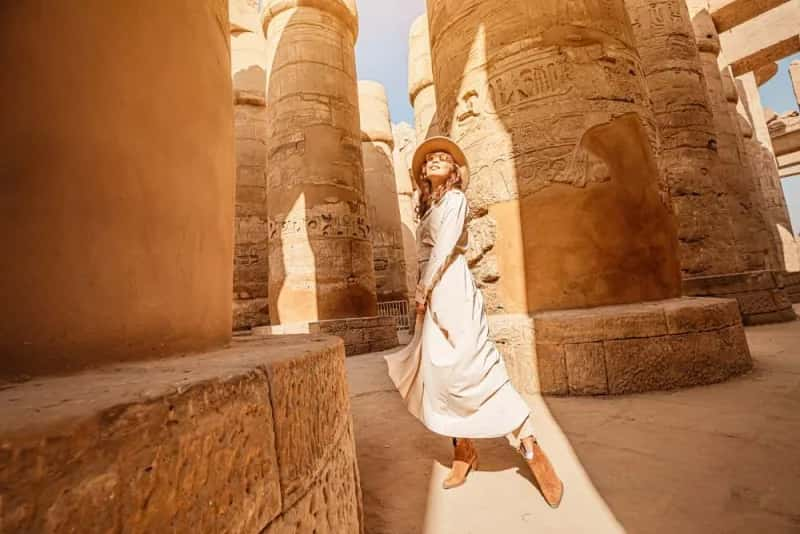
Book this Egypt Budget Tour and enjoy 8 days Cairo and Nile cruise tour package at the best price with 5 star quality ac ...
$ 1139 | Per Person
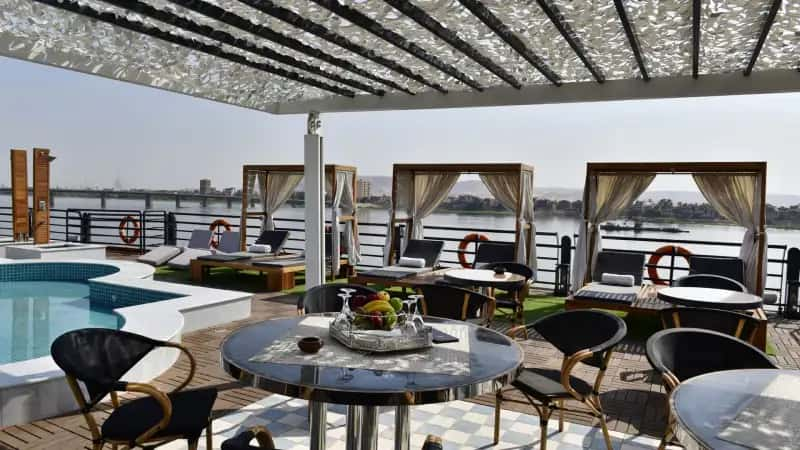
Sail the nile between Luxor and Aswan onboard MS Mayfair Nile cruise and don't miss out on the best travel experience in ...
$ 699 | Per Person
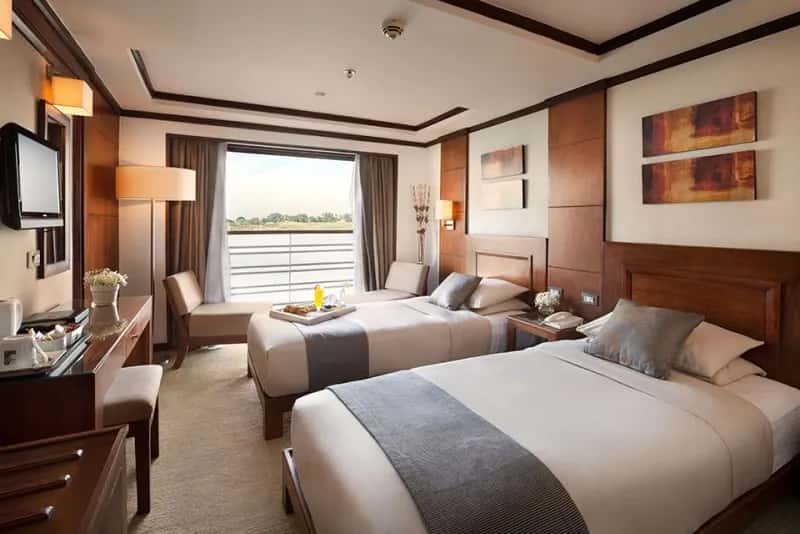
Enjoy luxurious accommodation while sailing the Nile River between Luxor and Aswan aboard MS Farah nile cruise. Book Tod ...
$ 699 | Per Person

Cruise the nile aboard MS Movenpick Royal Lily Nile Cruise & Explore the wonders of the ancient Egypt along the Nile Riv ...
$ 699 | Per Person
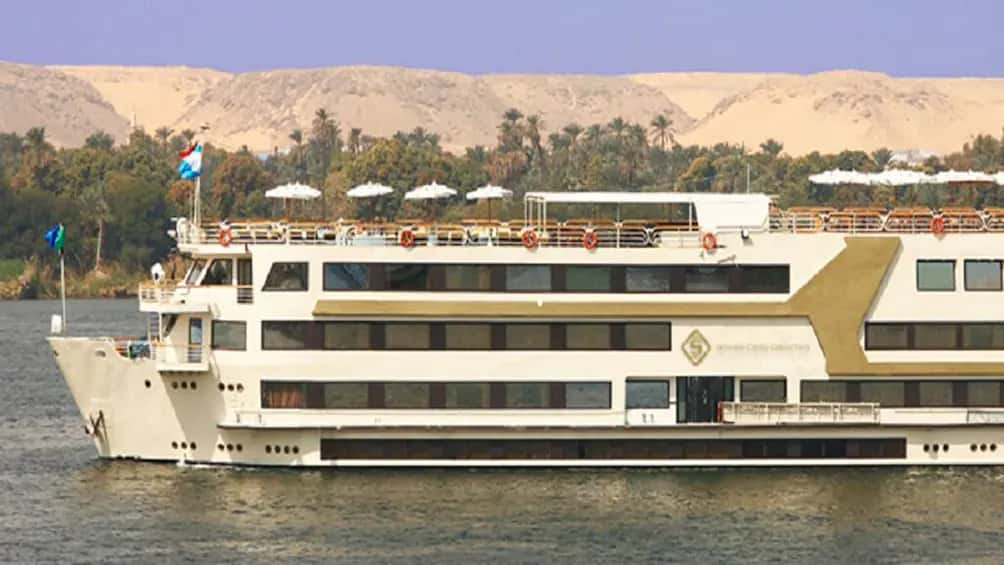
Discover the treasures of the Nile Valley aboard the magical cruise ship MS Nile Goddess and Visit the most famous and h ...
$ 649 | Per Person
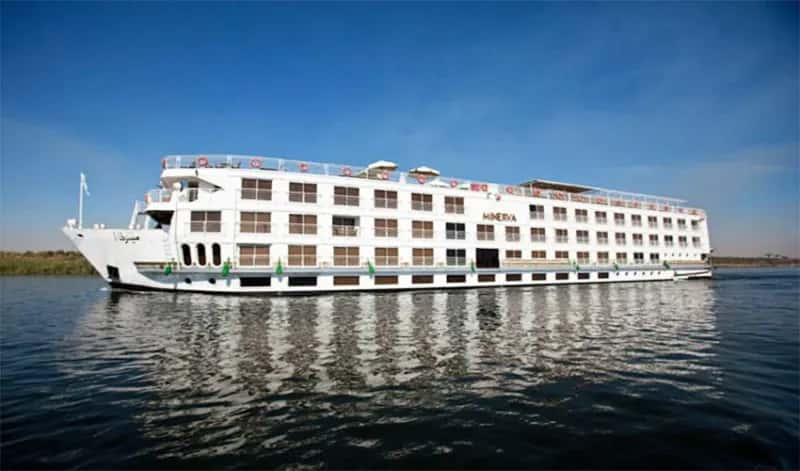
Steigenberger Minerva Nile Cruise: Enjoy sailing the Nile River between Luxor and Aswan aboard the fascinating Steigenbe ...
$ 599 | Per Person

Cruise the Nile aboard the MS Moon Dance with its modern 5-star luxury design & sails and Visit the best attractions on ...
$ 599 | Per Person
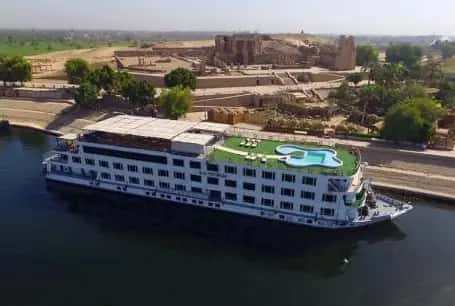
Nile Premium Cruise: Sail the Nile between Luxor and Aswan aboard the Ms Nile Premium Cruise. Live the magic of the past ...
$ 599 | Per Person
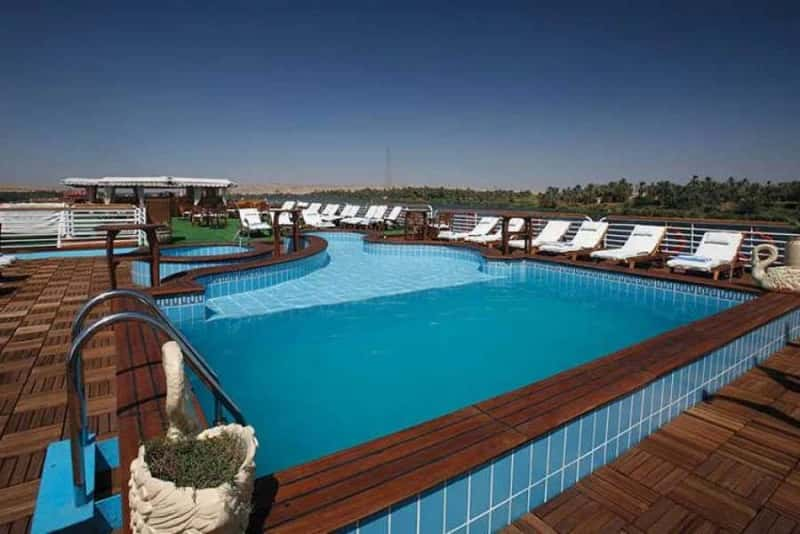
Amarco Nile Cruise: MS Amarco 1 is an award-winning Nile cruise ship sailing between Luxor and Aswan visiting the most b ...
$ 599 | Per Person
-1.webp.webp&w=3840&q=60)
This Egypt Itinerary 8 Days Cairo and Nile cruise package is the best Egypt tour travelers book. Visit the best of Egypt ...
$ 1299 | Per Person
.webp.webp&w=3840&q=60)
Book this 11 day Egypt tour package with a 7-day Nile cruise included, and visit the most emblematic tourist attractions ...
$ 1549 | Per Person
.webp.webp&w=3840&q=60)
The best Egypt Vacation Package: 11 day Egypt Trip Package. Starting by ancient Cairo, Cruising the Nile then relax on t ...
$ 2199 | Per Person
.webp.webp&w=3840&q=60)
Enjoy the best 12 Day Egypt Tour & Visit the Great Pyramids of Giza and the marvelous Temples in luxor and Aswan then Re ...
$ 2299 | Per Person
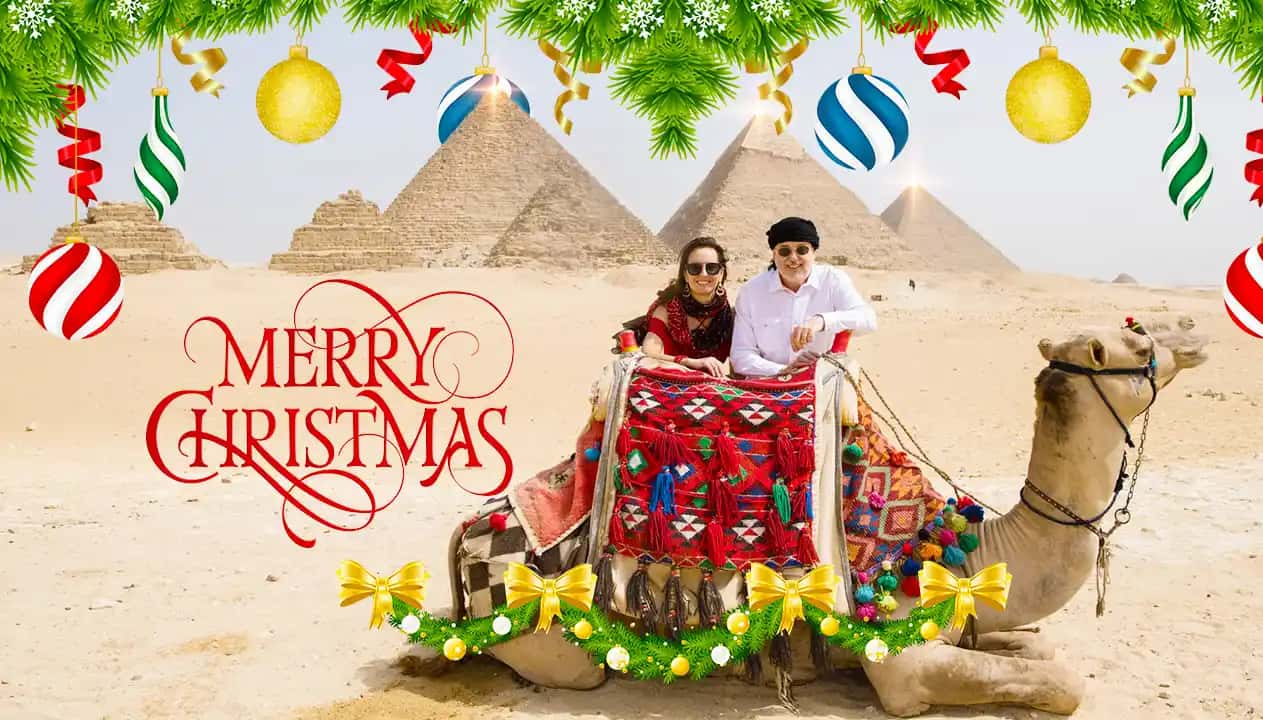
Join an incredible Egypt Christmas Tour to discover the enchanting wonders of Egypt during the festive season. This spec ...
$ 1599 | Per Person
.webp.webp&w=3840&q=60)
This 12 Day Cairo, Nile Cruise, Sharm El Sheikh tour in Christmas and New Year is the best option for you visiting the t ...
$ 2699 | Per Person
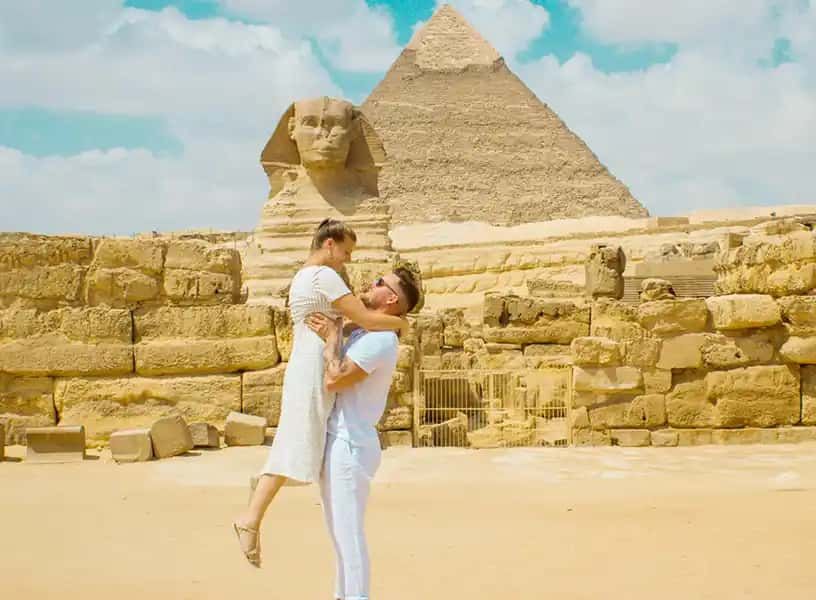
A romantic Egypt Honeymoon Trip. Visit the Pyramids and Sphinx with Nile cruise adventure in Luxor and Aswan watching li ...
$ 999 | Per Person
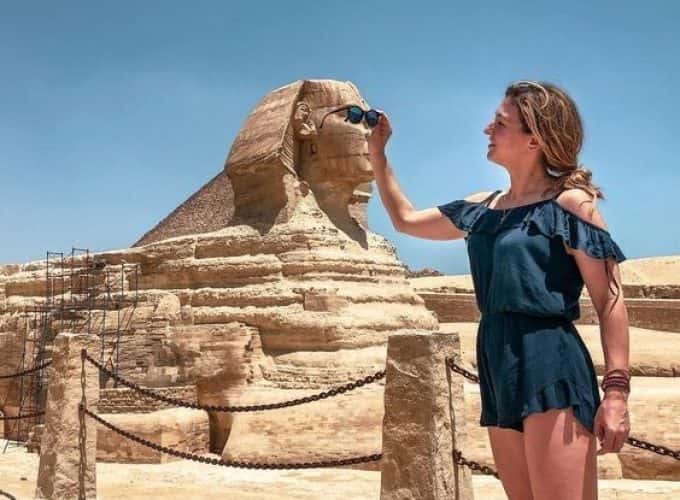
if you want to spend New Years in Egypt This 8-day Cairo and Nile cruise package is one of the best Egypt new year offer ...
$ 1799 | Per Person